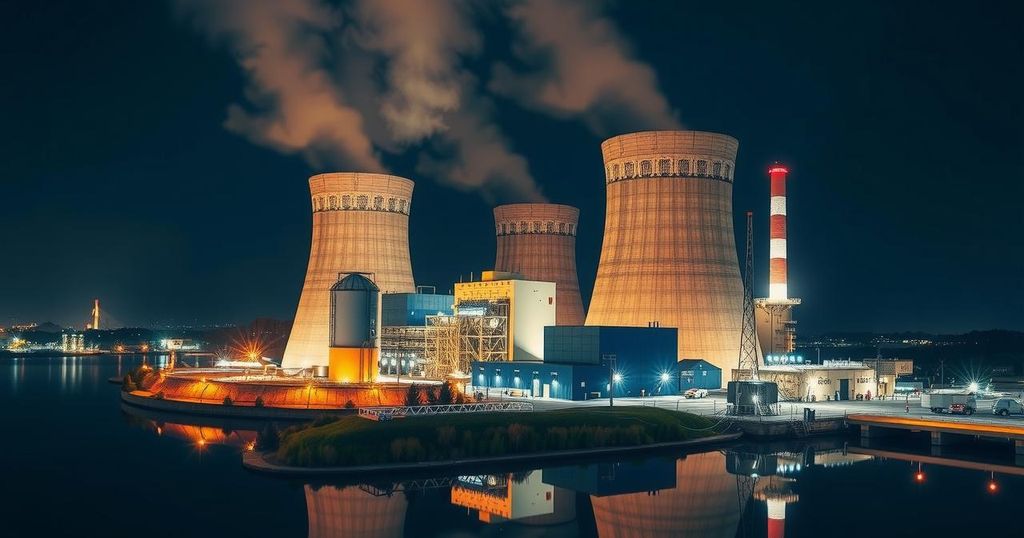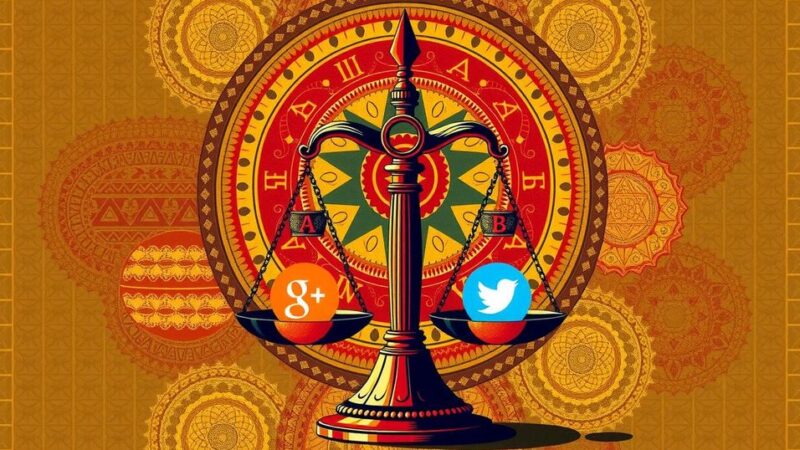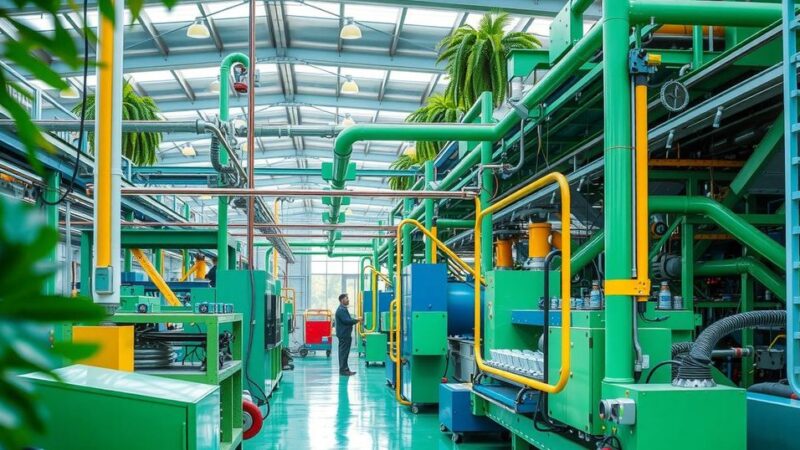Nuclear power, once seen in decline, is experiencing a revival due to renewed interest from technology companies and the need for nations to cut carbon emissions. This shift includes investments in Small Modular Reactors and strategies to triple nuclear power generation by 2050. However, the industry still grapples with challenges related to safety, costs, and radioactive waste management.
A decade ago, the nuclear energy industry appeared to be in decline, facing challenges related to safety, cost, and waste disposal. Now, however, there is a renewed interest in nuclear power, driven by technology firms such as Microsoft, Google, and Amazon, and by the urgent need for wealthy nations to reduce carbon emissions. Historical accidents at Chernobyl and Fukushima had slowed the industry’s growth, but countries like China have continued to invest heavily in nuclear technology and expand their capacities.
As pressure grows to meet energy demands and commit to emission reduction targets established by the Paris Agreement, nations are reconsidering their nuclear energy strategies. Recent decisions by South Korea to enhance its nuclear fleet and France’s commitment to building additional reactors showcase the shift in perspective towards nuclear power. The U.S. government has declared intentions to triple its nuclear energy output by 2050, aligning with a broader international consensus to leverage nuclear power as a clean energy source.
Technology giants are increasingly seeking reliable energy solutions for their data centers; Microsoft aims to reactivate the Three Mile Island power station to secure clean energy. Moreover, companies are exploring Small Modular Reactors (SMRs) as a more efficient and cost-effective option for nuclear energy. Despite the multitude of designs under development, the commercial viability of SMRs remains untested.
Vigorous debates surround the nuclear energy sector. Proponents argue it is crucial for climate goals, citing its reliability and low operational costs, while critics highlight its high capital requirements and the unresolved issue of radioactive waste disposal. After 70 years of nuclear progression, the long-term management of waste continues to present a significant hurdle for the industry’s future.
The discussion surrounding the revival of nuclear power is contextually significant, as it takes into account a decade of industry challenges and public fear stemming from past nuclear disasters. The original promise of nuclear power as an abundant energy source has often been overshadowed by safety concerns and the financial burden of building new facilities that meet modern safety standards. In response to environmental issues and energy demands, countries like China have maintained robust nuclear programs, while others are reevaluating their nuclear strategies amid the ongoing climate crisis.
In summary, while nuclear power faces historical challenges including safety concerns, high costs, and waste management issues, its revival appears imminent as governments and corporations pivot towards sustainable energy solutions. The collaborative efforts of technology firms and international policy alignments signify a potential new chapter for the nuclear energy sector. However, the industry must address lingering concerns about nuclear waste disposal and public perception to solidify its place in the future energy landscape.
Original Source: www.bbc.com






